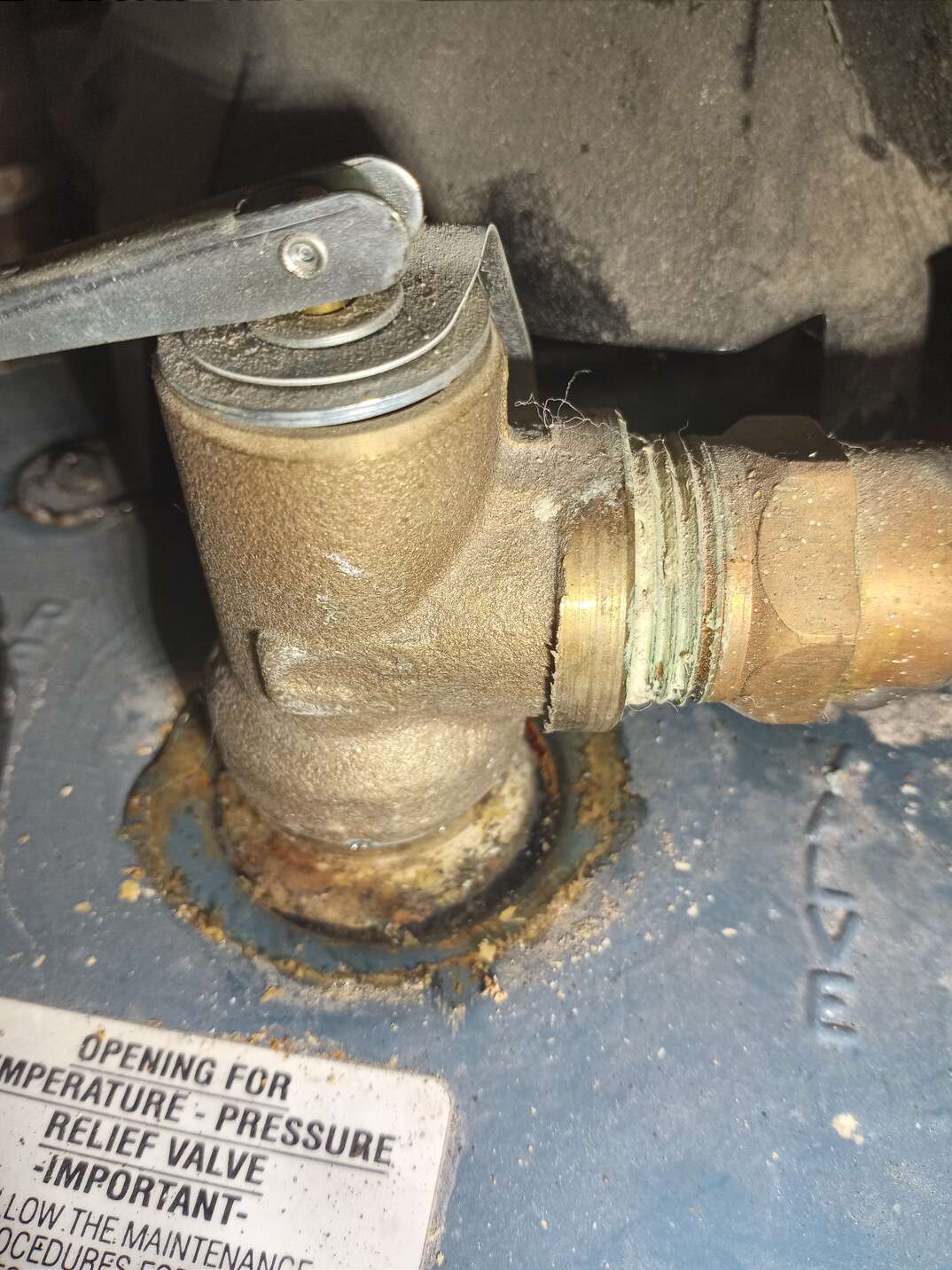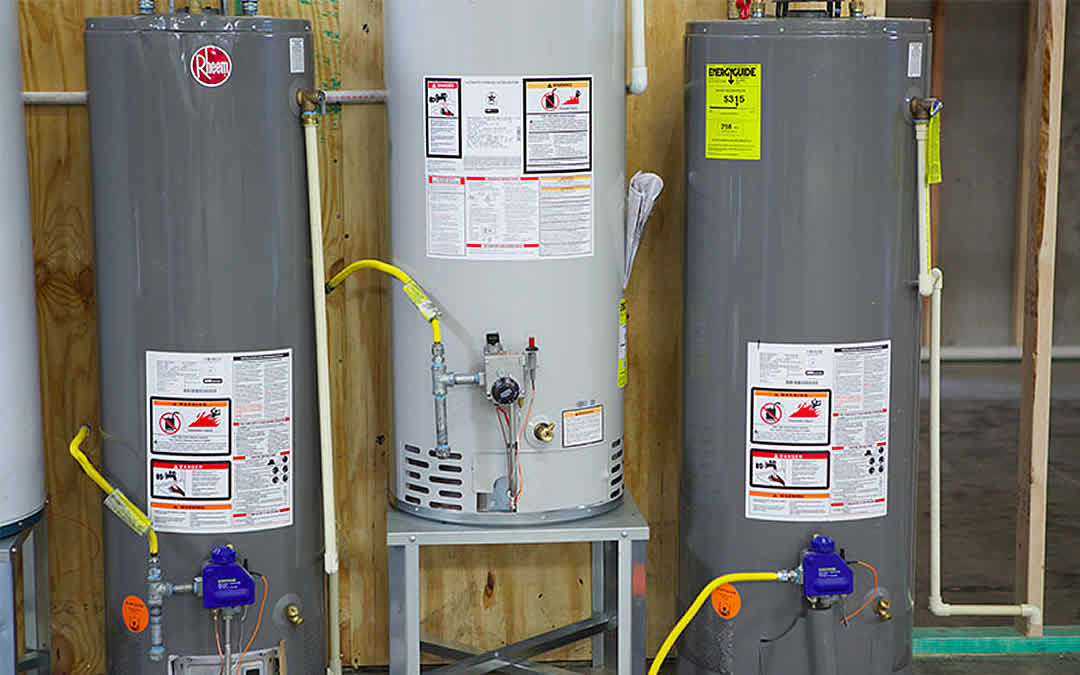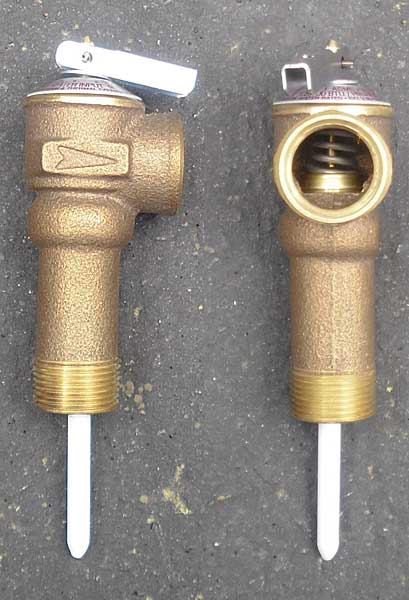A leaking water heater pressure relief valve after testing often indicates a faulty valve or high tank pressure. Immediate inspection is essential.
Water heater pressure relief valves are crucial for maintaining safety and preventing potential damage. This valve releases excess pressure, ensuring the system operates within safe limits. If it starts leaking post-testing, it can signal underlying issues such as a malfunctioning valve or excessive pressure buildup inside the tank.
Ignoring this problem can lead to severe consequences, including water damage or even tank explosions. Regular maintenance and timely inspections can help identify and resolve these issues before they escalate. Understanding the importance of this valve and addressing leaks promptly ensures the longevity and safe operation of your water heater system.

Credit: www.homeserve.com
Page Contents
Common Causes
Valve wear can cause leaks. Old valves may not seal correctly. This leads to water dripping. Regular checks can help spot wear early. Changing a worn valve is easy.
Sediment buildup can block the valve. This may cause leaking. Minerals in water form sediment. Flushing the tank helps remove it. Do this every few months. This keeps the valve clear.

Credit: www.johnmooreservices.com
Safety Precautions
Turn off the power to the water heater. This step is crucial. For electric heaters, switch off the circuit breaker. Gas heaters need their gas supply turned off. This prevents any accidents while working.
Release the pressure inside the water heater. Open a hot water faucet. This reduces pressure in the tank. Next, pull the lever on the pressure relief valve. Be cautious as hot water might come out. This ensures a safer environment for inspection and repair.
Tools Needed
A wrench is crucial for this task. Use it to tighten or loosen the valve. Ensure you have a good grip when using the wrench.
A bucket helps catch water from the leaking valve. Place it underneath the valve to collect any water. This will prevent water from spilling on the floor.
Step-by-step Guide
Turn off the power supply to the water heater. This will keep you safe. Connect a hose to the drain valve at the bottom of the tank. Make sure the other end of the hose is in a safe place to let the water flow out. Open the drain valve and let the water flow out completely. This will empty the tank and make it easier to work on.
Use a wrench to carefully loosen the old valve. Turn the wrench counterclockwise to remove the valve. Once the valve is loose, use your hands to finish removing it. Be careful not to damage any pipes or fittings. Inspect the opening for any debris or damage. Clean the area before installing a new valve.
Installing New Valve
Wrap the Teflon tape around the threads of the new valve. Make sure to cover all threads. The tape helps prevent leaks. Wrap the tape tightly and smoothly. Use at least three layers of tape. This ensures a good seal.
Insert the new valve into the opening. Turn the valve clockwise to tighten. Use a wrench for a snug fit. Do not overtighten the valve. This can damage the threads. Check for leaks after installation. Tighten more if needed.
Testing The Fix
After testing, check the water heater pressure relief valve for leaks. If leaking, refill the tank and retest the valve. Ensure proper functioning before use.
When To Call A Professional
Persistent leaks can be a sign of a bigger problem. Water should stop leaking soon after testing. If it doesn’t, there might be an issue with the valve. A damaged valve could lead to water damage at home. It’s crucial to get expert help quickly. Ignoring the problem can cause more costly repairs.
Some issues are too tricky to fix alone. A complex issue might need special tools and skills. Professionals can spot hidden problems. They can fix the valve safely and correctly. Trying to fix it yourself could make things worse. It’s always better to get help from someone with experience.

Credit: terrylove.com
Preventative Maintenance
Checking your water heater often helps. Look for leaks and rust. Make sure the pressure relief valve works. A broken valve can cause big problems. Regular checks keep your heater safe.
Flushing the tank removes dirt and debris. This helps your heater work better. Clean the tank once a year. This makes the water cleaner and the heater lasts longer. Follow the steps in the manual. Always turn off the heater before starting.
Conclusion
A leaking water heater pressure relief valve after testing can indicate potential issues. Addressing it promptly ensures safety and efficiency. Regular maintenance and timely repairs prevent costly damage. Always consult a professional if you’re unsure. Keeping your water heater in top condition extends its lifespan and improves performance.
